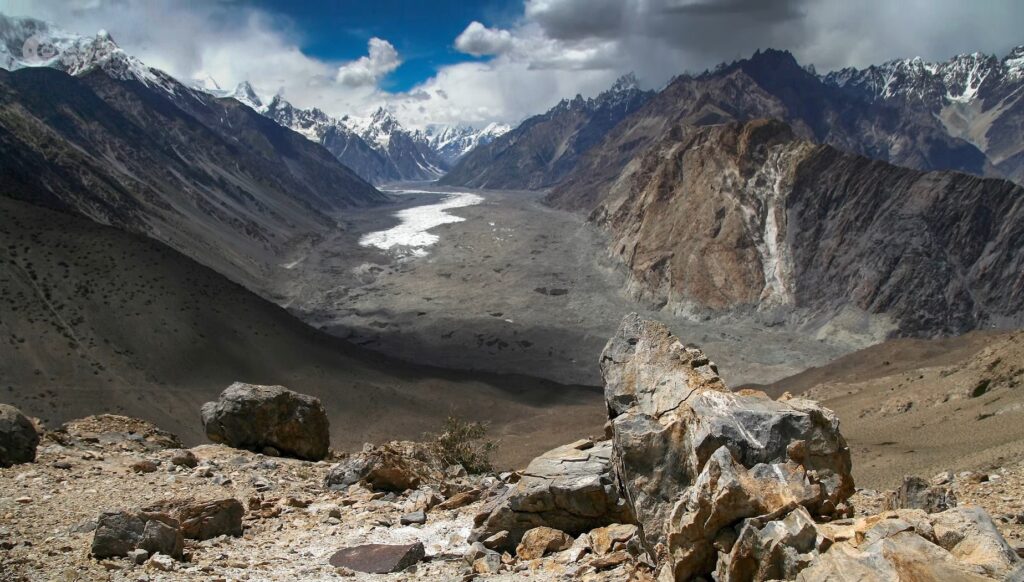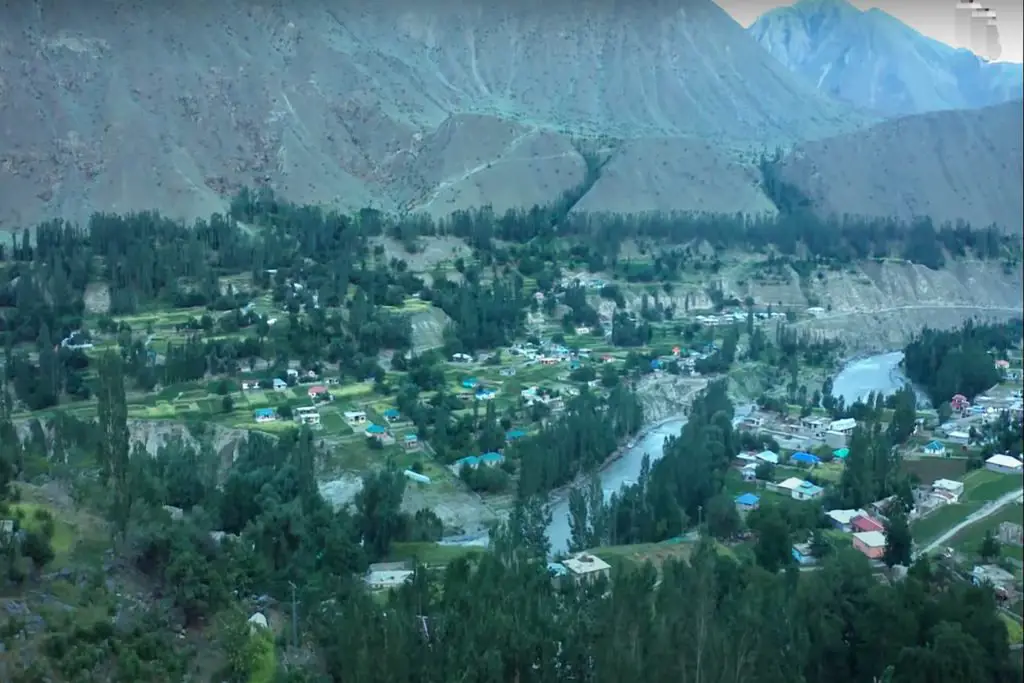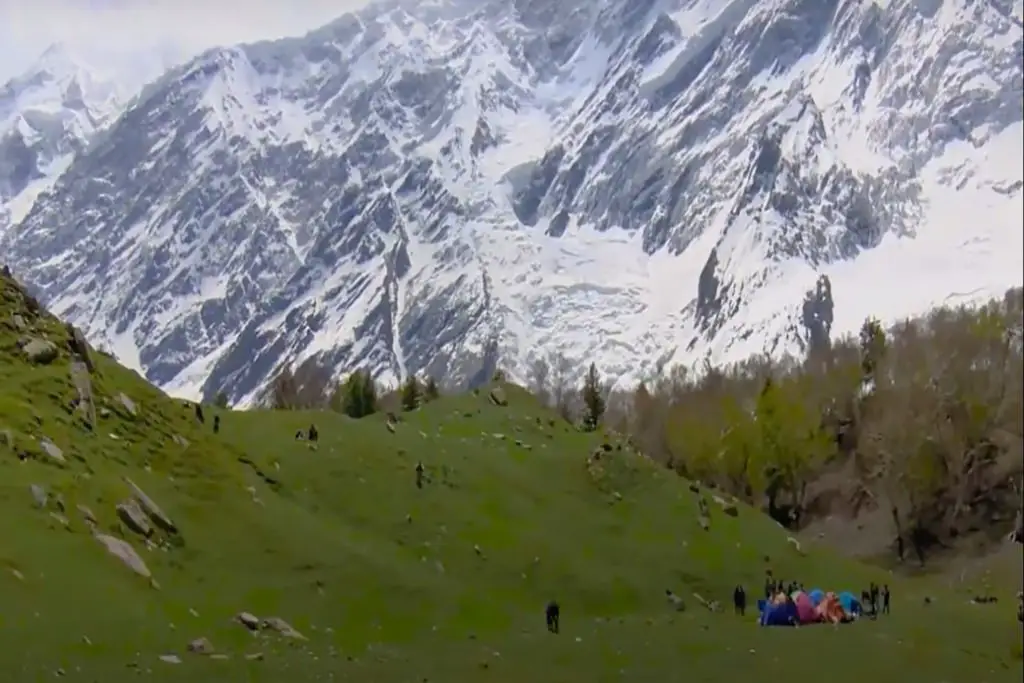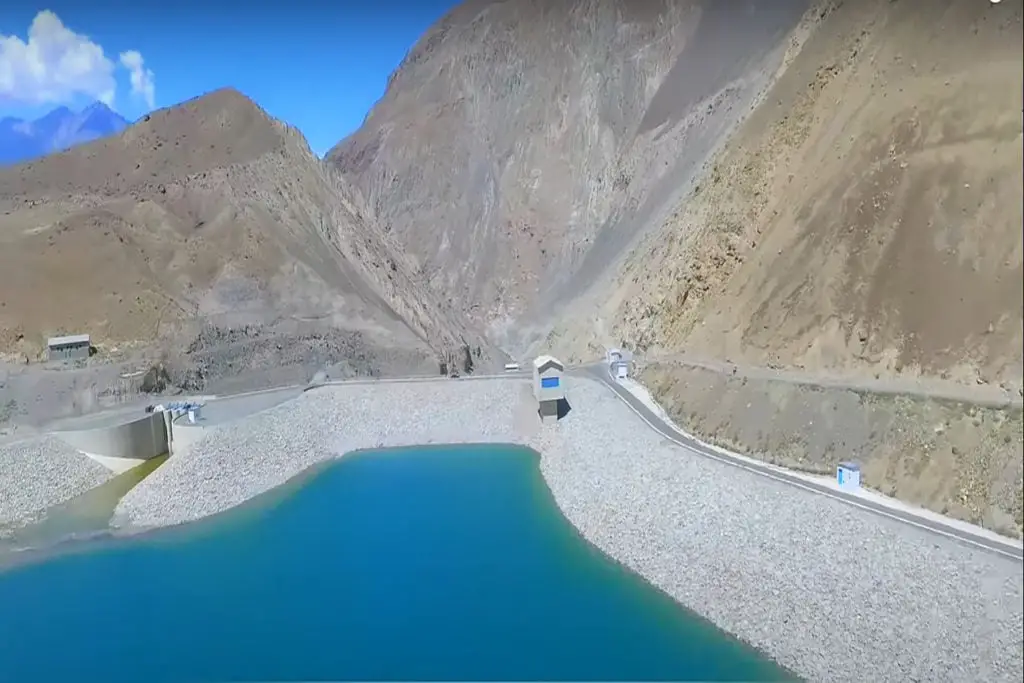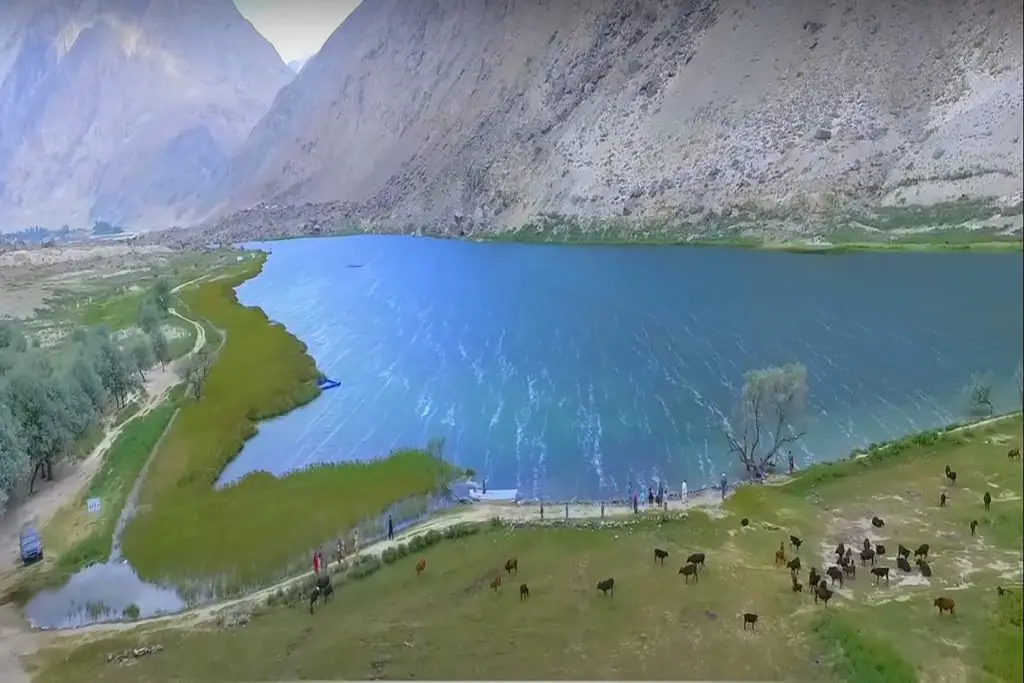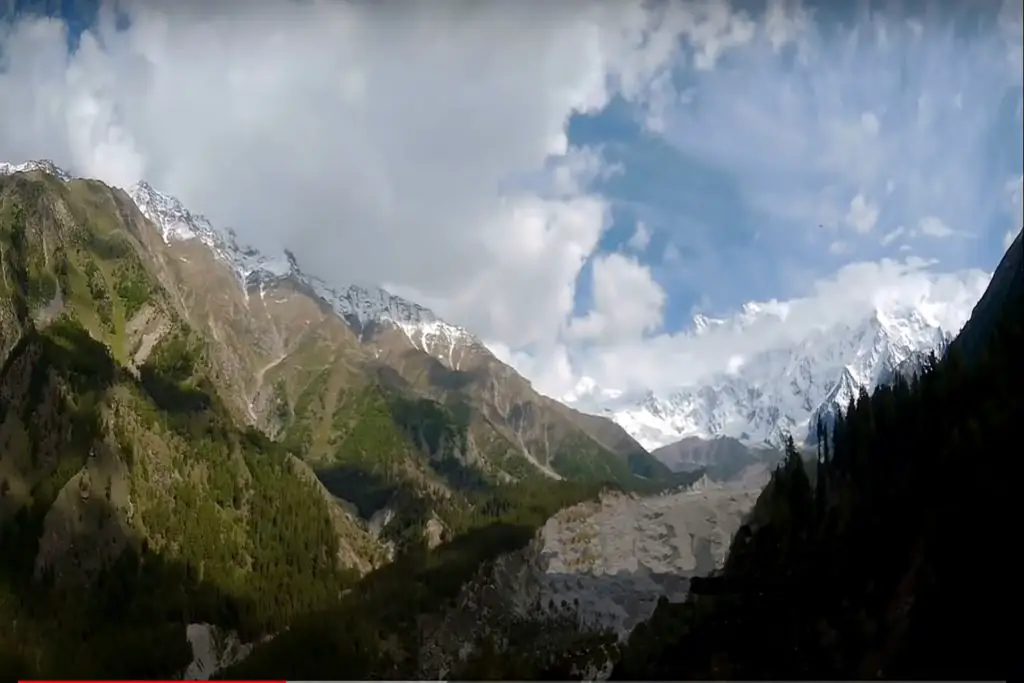Batura Glacier or Batura Muztagh is a majestic mountain range located in the Karakoram region of northern Pakistan. The range is situated in the Gilgit-Baltistan region and is part of the larger Karakoram range, which is home to some of the highest peaks in the world. Batura Muztagh is named after the Batura Glacier, the fifth-longest glacier in the world outside of the polar regions, which is located at the heart of the range.
Batura Glacier Height
Batura Muztagh is a truly impressive sight, with towering peaks and rugged terrain that draw visitors from all over the world. The range is home to several notable peaks, including Batura I, which stands at 7,795 meters (25,574 feet), and Batura II, which stands at 7,762 meters (25,462 feet). In addition to these famous peaks, the range is also home to several other notable mountains, including Shishpare, Passu Sar, and Tupopdan.
Length of Batura Muztagh
Batura Muztagh is not only a destination for mountaineers, but also for nature enthusiasts who come to explore the range’s stunning natural beauty. The Batura Glacier is one of the most prominent features of the range and is a popular destination for trekkers and hikers.
The glacier covers an area of approximately 56 square kilometers and is around 62 kilometers long, making it one of the longest and largest glaciers in the world. The glacier is also a major source of water for the surrounding communities and plays a vital role in the local ecosystem.
Geological Features of Batura Glacier
The Batura Glacier is a remarkable natural feature that showcases the beauty and unique characteristics of the region. Stretching across the landscape, the glacier presents a striking contrast between its lower portions and the surrounding villages and pastures.
The lower portions of the Batura Glacier are characterized by a vast expanse of rocks and gravelly moraine. These accumulations of rocks and sediment are carried down by the glacier, often caused by avalanches and the movement of ice. The grey sea of rocks creates a rugged and barren landscape, demonstrating the powerful forces of nature at work.
The glacier itself has a mean ice thickness of approximately 150 meters, with the lower parts holding the majority of its mass. This accumulation of ice contributes to the formation and sustenance of the glacier, ensuring its steady flow downhill. The presence of the Batura Glacier is vital to the local hydrological systems, providing a source of fresh water for the surrounding communities and ecosystems.
Bordering the Batura Glacier are several villages and pastures where traditional herding practices are carried out. The local communities rely on the fertile lands for grazing their herds of sheep, goats, and cows. In this rugged and harsh environment, the presence of roses and juniper trees provides a touch of natural beauty and resilience. These hardy plant species are adapted to the challenging mountain conditions, adding color and life to the otherwise rocky surroundings.
In the upper-right portion of the image, pockets of cultivated vegetation can be observed alongside the Gilgit and Hunza rivers. These areas of cultivation indicate human settlements and the agricultural activities that take place in the region. The communities residing near the glacier utilize the fertile soil and water resources from the rivers to grow crops and sustain their livelihoods.
The Batura Glacier is in close proximity to the Batura Muztagh, a sub-range of the Karakoram mountain range. This subrange is home to several notable peaks, including Batura Sar and Passu Sar, which stand tall as majestic sentinels in the surrounding landscape. These towering mountains contribute to the awe-inspiring beauty of the region, attracting mountaineers and adventurers from around the world.
One intriguing aspect of the glaciers in the Karakoram range, including the Batura Glacier, is their resistance to the trend of global warming. While many glaciers worldwide are experiencing significant shrinkage due to climate change, the glaciers in the Karakoram region have shown either stability or even slight growth. This phenomenon has been coined the “Karakoram Anomaly.” Scientists believe that the unique climate conditions, including colder temperatures and increased snowfall, contribute to the resilience of these glaciers.
In conclusion, the Batura Glacier and its surrounding landscape offer a glimpse into the beauty and resilience of the Karakoram region. From the rocky moraine to the vibrant villages and the towering peaks, this area showcases the harmonious coexistence of nature and human communities. The presence of the glacier, the cultivated lands, and the unique climate patterns all contribute to the fascinating story of the Batura Glacier and its place within the “Karakoram Anomaly.”
Batura Glacier Trek
The Batura Valley, situated in the Gojal region of Gilgit-Baltistan, Pakistan, is a place of natural wonder and beauty. Nestled within this valley is the magnificent Batura Glacier, a 57-kilometer (35-mile) long expanse of ice and snow. The region is a paradise for alpine enthusiasts, with its lofty mountains, long glaciers, and awe-inspiring landscapes.
The Batura Glacier trek is a remarkable experience that unveils the breathtaking scenery of the area. With an average elevation of 3,800 meters, trekkers are greeted by vast meadows adorned with wild alpine flowers, creating a vibrant tapestry of colors. Birch trees dot the landscape, providing a sense of tranquility, while roses and juniper trees add a touch of fragrance and beauty to the surroundings.
During the trek, visitors have the opportunity to witness the summer lifestyle of the Wakhi people. These indigenous inhabitants venture to the summer pastures with their cattle and yaks, embracing a traditional way of life deeply connected to the land. Interacting with the Wakhi people allows trekkers to gain insights into their rich culture, traditions, and deep-rooted respect for the natural environment.
The journey to the Batura Valley begins in Islamabad, the capital city of Pakistan. From there, travelers embark on a scenic drive along the Karakoram Highway, renowned as one of the world’s most breathtaking roads. Along the way, the panoramic views of majestic peaks such as Rakaposhi, Diran Peak, Shishpar Peak (7,611 meters), Ultar Peak (7,388 meters), Passu Peak (7,478 meters), Karon Koh (7,200 meters), and the Batura Massive (7,500-7,785 meters) leave visitors in awe of the Karakoram giants.
The enchanting culture of the local Hunza people adds another layer of charm to the experience. Their warm smiles and hospitality create a welcoming atmosphere for visitors, allowing them to immerse themselves in the local traditions and customs. The fascinating Hunza culture, coupled with the breathtaking natural beauty, makes every day of the trip an unforgettable and cherished experience.
The Batura Valley and its glacier offer a glimpse into a world of pristine natural landscapes, ancient cultures, and awe-inspiring mountain vistas. It is a destination that captivates the senses and leaves a lasting impression on the hearts of those fortunate enough to explore its wonders. The Batura Glacier trek is not just a physical journey but also a spiritual and cultural immersion, providing trekkers with memories to last a lifetime.
In addition to the glacier, Batura Muztagh is also home to a variety of other natural attractions, including lush green valleys, crystal-clear streams, and rare flora and fauna. The region is particularly famous for its wildlife, with several rare and endangered species, including the snow leopard, ibex, and Marco Polo sheep, making their home in the range.
Visitors to Batura Muztagh can experience the rich cultural heritage of the region by visiting the local villages and exploring their unique customs and traditions. The people of the region are known for their hospitality, and visitors can sample the local cuisine and handicrafts while learning more about the local way of life.
In conclusion, Batura Muztagh is a natural wonder that is not to be missed by anyone visiting the Karakoram region of northern Pakistan. Its stunning beauty, rich cultural heritage, and ecological significance make it a destination that is both awe-inspiring and educational. Whether you are an experienced mountaineer or a nature lover looking for a new adventure, Batura Muztagh is sure to leave you with memories that will last a lifetime.

